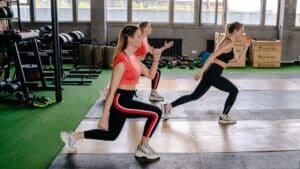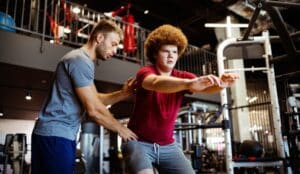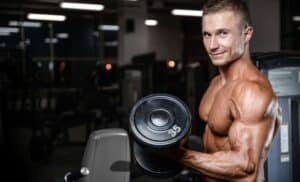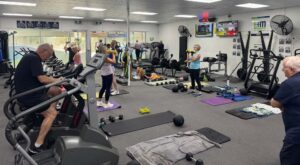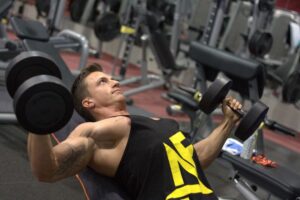It’s important to know what to eat before going to the gym. Proper nutrition can make or break a workout. It’ll determine energy levels, muscle growth, even how much fat we burn. A bad meal could end a good workout before it starts, or it could give us the burst we need to push us past our limits. Our diet can also help avoid athletic injuries caused by a lack of nutrition. Things like fractures, pain and tissue damage are partially linked to the foods we eat, so pay attention to these tips. They could mean the difference between a half-hearted effort and a night of pain, or the life-changing results we’re all striving to achieve.
When to Eat
Timing meals is just as important as knowing what to eat before going to the gym. Eating before a workout is essential. It provides us with the glucose we need to maintain high energy levels, and the protein we need to build muscle and burn fat, among other essential nutrients. But fitness experts agree that we should wait until the food is digested before working out. Failing to do so could cause us to burn out quickly, and it may result in health issues, like nausea, vomiting and the dreaded cramps we’re often warned about. When we don’t build up enough glycerin or protein, our bodies may start breaking down muscles for fuel. Improper nutrition as a whole can deplete the nutrients we need for strong bones, increasing the risk of stress fractures. So, we can’t just jump on the treadmill after chowing down. Fitness experts generally advise waiting 1-2 hours after eating a light snack to give the food time to be stored as energy, and 3-4 hours after eating a larger meal. These times vary depending on the meal and each individual’s level of metabolism. If in doubt, it’s better to wait a little longer instead of taking the risk. Keep this in mind as we go through what to eat before going to the gym in the list below. Some of the food items are more filling than others. The body may take more time to digest them. If we listen to what our bodies are telling us, we’ll have a better idea as to whether we should wait or if we’re ready to begin working out.
What to eat before going to the gym
When deciding what to eat before going to the gym, it’s important to know what nutrients the body needs to build muscle, sustain energy and burn fat. Also, know that there are shortcuts, and there are tried and true staples. Don’t give into temptation and trade a healthy snack for a bad food item. That’s counterproductive, and it will ultimately be detrimental to our fitness goals. Knowing what to avoid is just as important as knowing what to eat before going to the gym. That’s why this list is meant to showcase the healthiest options available to us, as well as the foods we should avoid.
Whole Grains
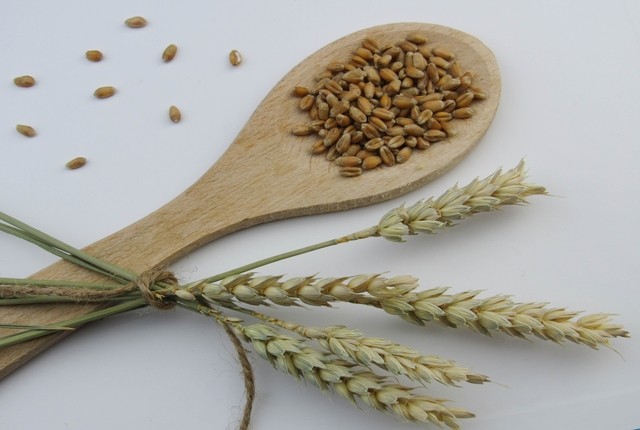
Whole grains are an amazing pre-workout food because they’re high in glucose, which the body uses to create energy in the form of glycogen. This substance is stored in the liver and broken down by enzymes, providing a sustained boost of energy that will help us workout longer without getting burnt out or tired. Whole grains take longer to digest than other foods, so it’s best to wait an extended period of time before exercising.
Whole grains are wonderful for breakfast, because they keep us going throughout the day, and the fiber content means we stay fuller longer. So we’ll spend less time reaching for snacks and more time worrying about fitness. They’re also a great replacement for refined wheat and other processed grains that can cause us to crash and crave unhealthy foods.
Most people consume whole grains in the form of oatmeal, but they are also present in certain breads, like whole-grain bagels and toast, as well as bulgur wheat and millet, which are often boiled or steamed. These are foods that we are used to flavoring. Try to avoid mixing them with sugar, sodium or fat. Instead of butter on toast or cream cheese on bagels, try a fat-free Greek yogurt spread. Stick with fruit as a topping instead of sugar or honey, and don’t even think about using that saltshaker. Dehydration caused by sodium will poison any workout.
Nuts
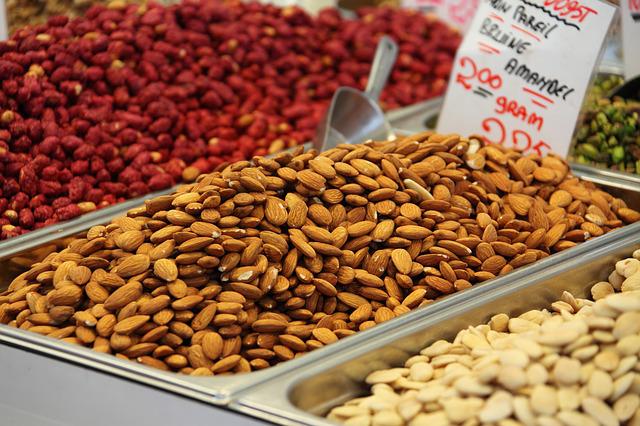
Nuts are known universally as a workout food, because of their protein content. Proteins are the building blocks of muscle growth. They break down into amino acids, which aid in muscle regeneration and supply the body with the materials needed to build new tissue. Almonds and pistachios have the highest concentration of protein. Almonds are considered the best because they’re relatively low in fat, which can stall a workout. Walnuts are also considered beneficial because they’re rich in Omega-3 fatty acids, a nutrient is known to aid in burning fat. Peanut butter is one of the most popular choices because it’s accessible and cheap, and it goes great with a lot of other beneficial food items.
There are many ways to incorporate nuts into the diet. Try them on low-fat salads, use them as a topping on oatmeal or other whole grains, or simply eat a handful before working out. They do take longer to digest than normal foods, so it’s best to give the body some time before getting started at the gym.
Bananas

Sometimes the simplest option is the best option. When deciding what to eat before going to the gym there’s no better choice than bananas. They’re digested quickly, so there’s no needs to wait more than an hour or so before working out, and they have a small amount of fiber and protein. This insulates the energy boost caused by carbohydrates, making it easier to work out longer. Bananas are also rich in potassium, an electrolyte that the body needs to stay hydrated.
Eating one banana might be enough for shorter workouts, but intense workouts might require a greater boost of energy. Many people like to make a sandwich using whole grain bread for complex carbohydrates, peanut butter for protein and a banana to make it easier for the body to build muscle and utilize that extra energy.
Eggs

When deciding what to eat before going to the gym, eggs are one of the best options out there. Whole or with the yolks removed, they provide many of the essentials we need for a successful workout. They’re low in calories, which means we don’t have to work as hard to burn them off, and the whites are rich in protein, encouraging muscle growth and regeneration. The yolks might be high in cholesterol, but they’re still rich in nutrients and protein. Many people prefer to leave them in, especially if they’re planning a long workout that requires something more substantial.
Softer eggs take less time to digest, making it easier to shovel some in before running out the door. For this reason, many people prefer to scramble them using a non-stick pan as opposed to oil; others will poach them and serve them on wholegrain toast for the added benefit of complex carbohydrates. The choice really depends on the amount of time available and our personal preferences with regards to taste and consistency.
Fat-Free Greek Yogurt

Fat-free Greek yogurt is a favorite go-to for fitness enthusiasts, partially because of its massive protein content. It’s great for building muscle and encouraging muscle regrowth. Greek yogurt is also easy to burn off because it’s low in calories, and it contains a small amount of carbohydrates, which can boost endurance.
There are plenty of high-protein, low calorie foods out there, but they’re not as easy to customize as Greek yogurt. It goes great with complex carbohydrates like granola. It’s perfect with bananas, even nutrient-rich foods like berries, which are known for their ability to provide a sustained boost of energy. Try different combinations and adjust portion size depending upon the intensity of the desired workout; do so while considering the amount of time it will take for the body to digest the meal. Some toppings and portion sizes will take longer to digest than others.
Smoothies
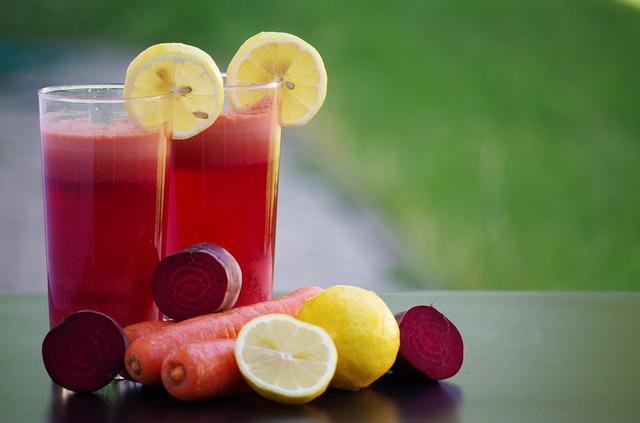
That blender collecting dust in the cupboard is one of the greatest tools we have in creating the perfect pre-workout meal. Anything can go inside it, which means that whatever nutrients we feel like consuming, we can simply shove them inside, hit the button and go. Try to come up with a combination of carbohydrates, protein and potassium. As we’ve already covered above, complex carbohydrates boost energy, protein aids in building muscle and potassium reinforces hydration.
Many people like to use either peanut butter or Greek yogurt in their smoothies, because of the protein content and their consistency, which goes well with items like berries and bananas. Berries are a favorite because they provide antioxidants and energy supplying nutrients. Apple juice is common because it aids in digestion and may help metabolize the smoothie quicker. There are many combinations, and they’re all worth trying.

